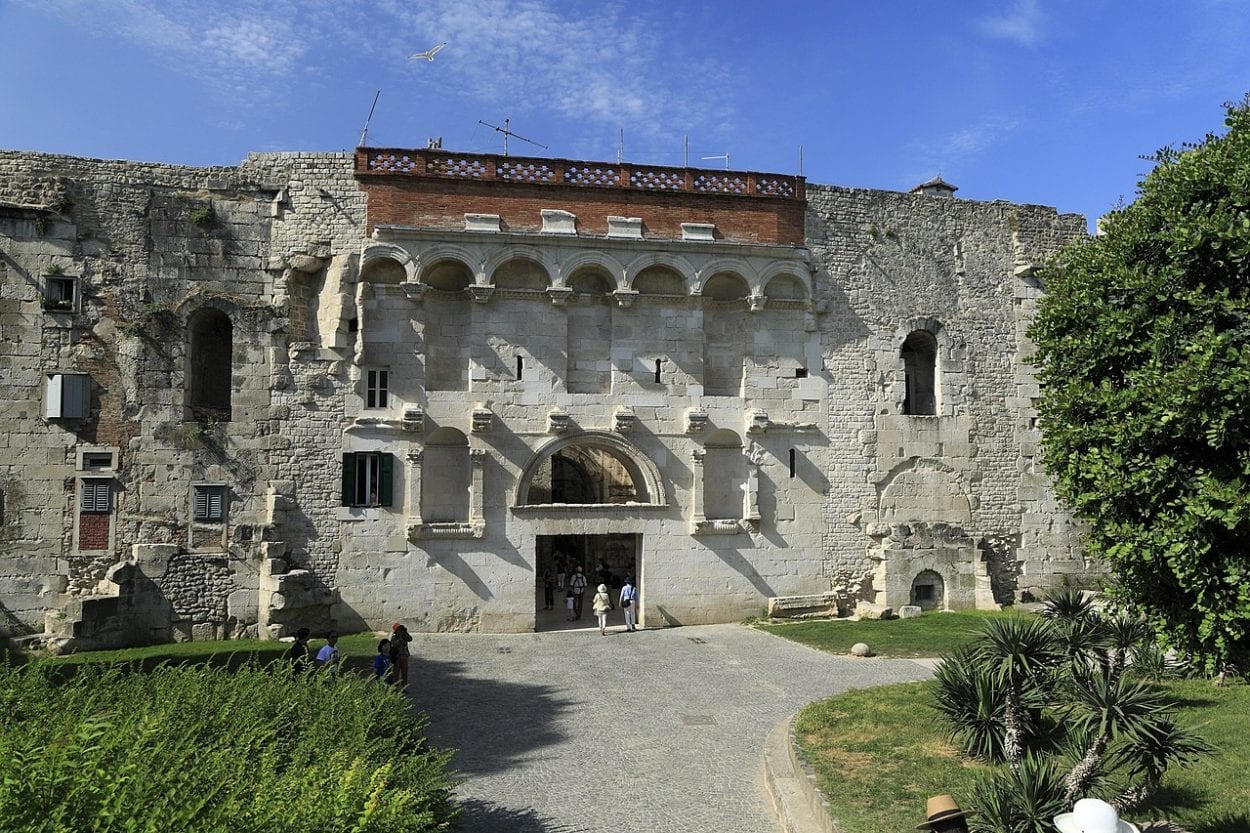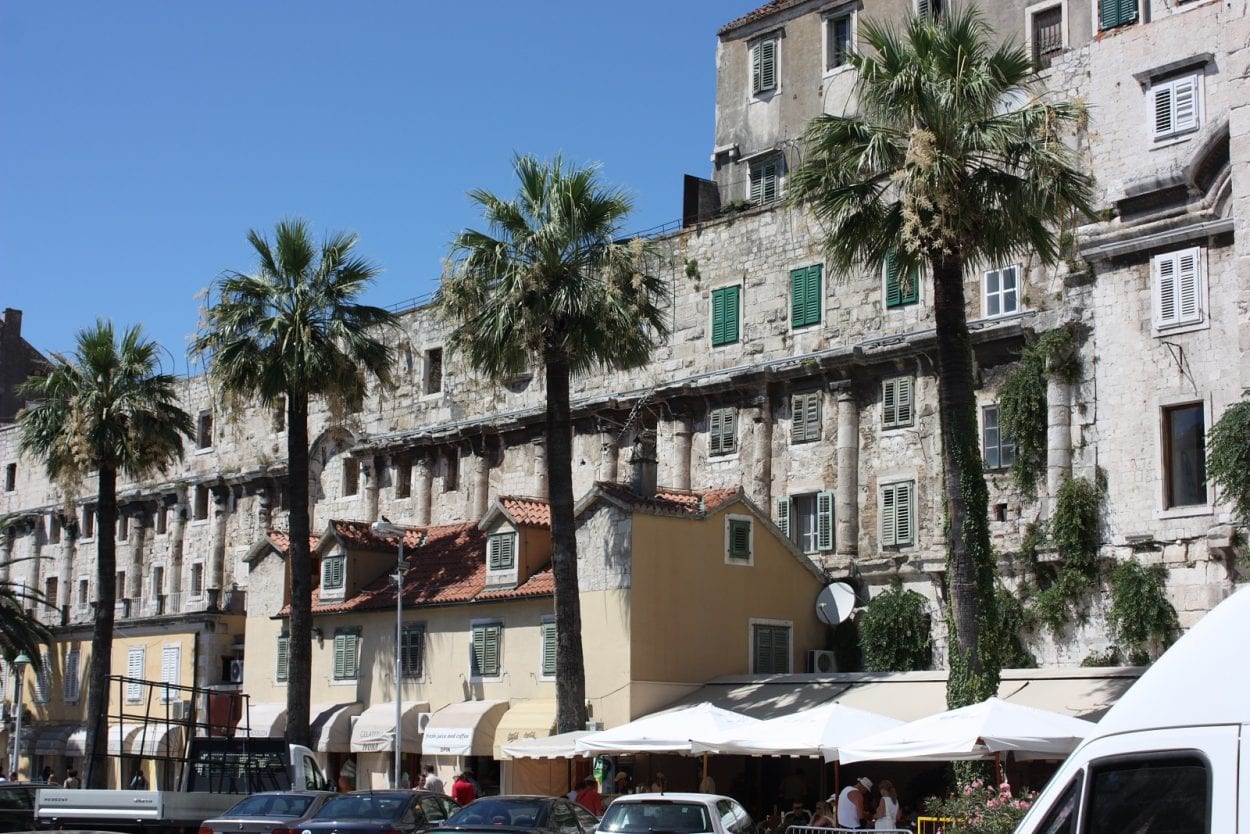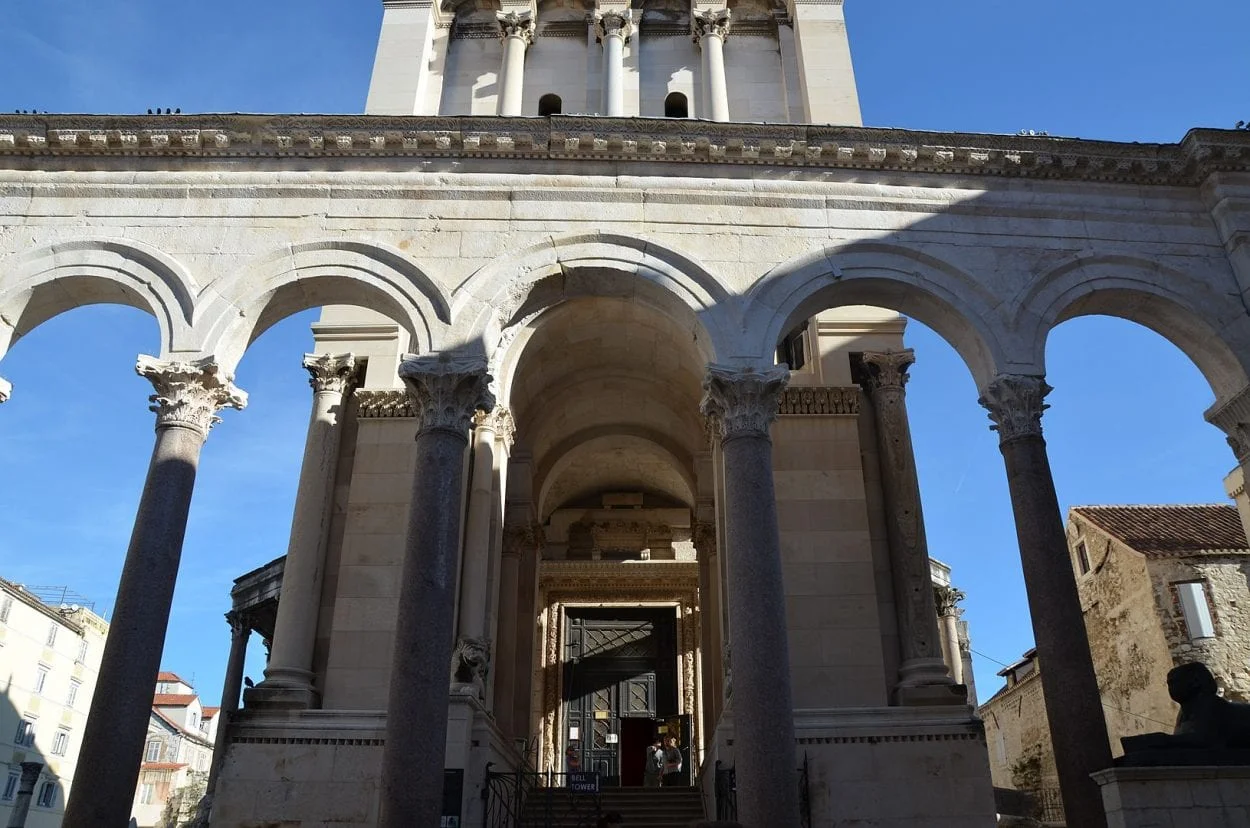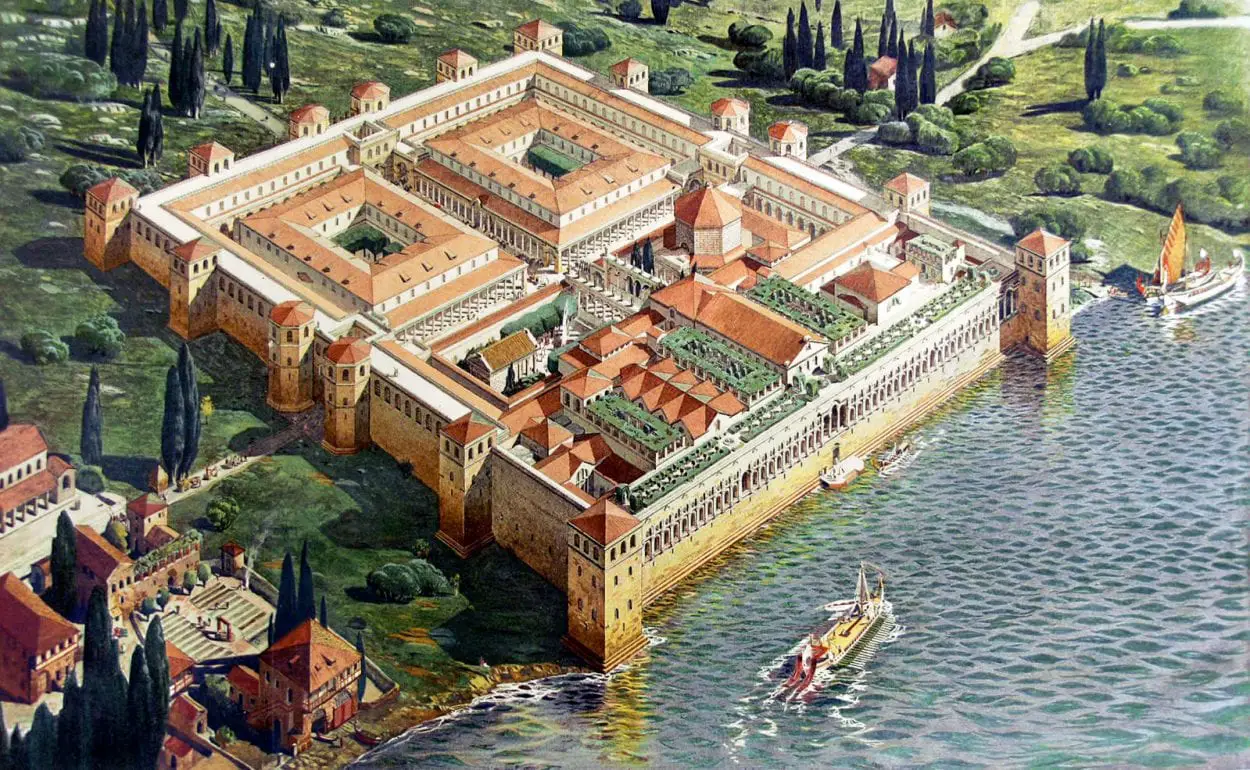Diocletian’s Palace is an ancient palace complex, built during the fourth century AD for the retirement of the Roman emperor Diocletian.
Gaius Aurelius Valerius Diocletianus was emperor from AD 284 to 305 during the end of the Crisis of the Third Century, having appointed Maximian as Augustus, co-emperor of the Western Empire whilst Diocletian ruled the Eastern Empire.
Diocletian’s reign is noted for securing the empires borders and stabilising the economy and political structure, but his reign was also mired in brutality and for the persecution of Christians.
Diocletian’s Palace was constructed between AD 295 to 305, near his hometown of Spalatum on the coast of the Adriatic Sea, in the old town of present-day Split in Croatia.

Intended for his retirement, the palace resembled the Roman forts of the 3rd-century era, and represents a transitional style of half Greek and half Byzantine palatial architecture.
The exterior of the palace had sixteen towers projecting from 22-metre-tall stone walls, whilst the interior was laid out like a Roman castrum with arcaded avenues separating four distinct quadrants.

The northern quadrants housed a garrison and the quarters for slaves and household servants, whilst the southern quadrants contained the imperial apartments that included a Peristyle, a Vestibule, and a temple dedicated to Jupiter.
A large mausoleum was also constructed in the southern quadrant to house the remains of the emperor after his death, which now forms the main part of the Cathedral of Saint Domnius.

Over the reign of successive emperors, the palace remained an imperial possession of the Roman court, providing shelter to the expelled members of the Emperor’s family.
With the invasion of Avars and Slavs around AD 614, the palace and the nearby city of Solin were badly damaged. The inhabitants of Solin took refuge within what remained of the palace and built new homes incorporating the palace into the new structures, which now forms the nucleus of the “old town” of Split.
Header Image – Diocletian’s Palace – Credit : Ernest Hébrard (recoloured by DIREKTOR) – Public Domain





